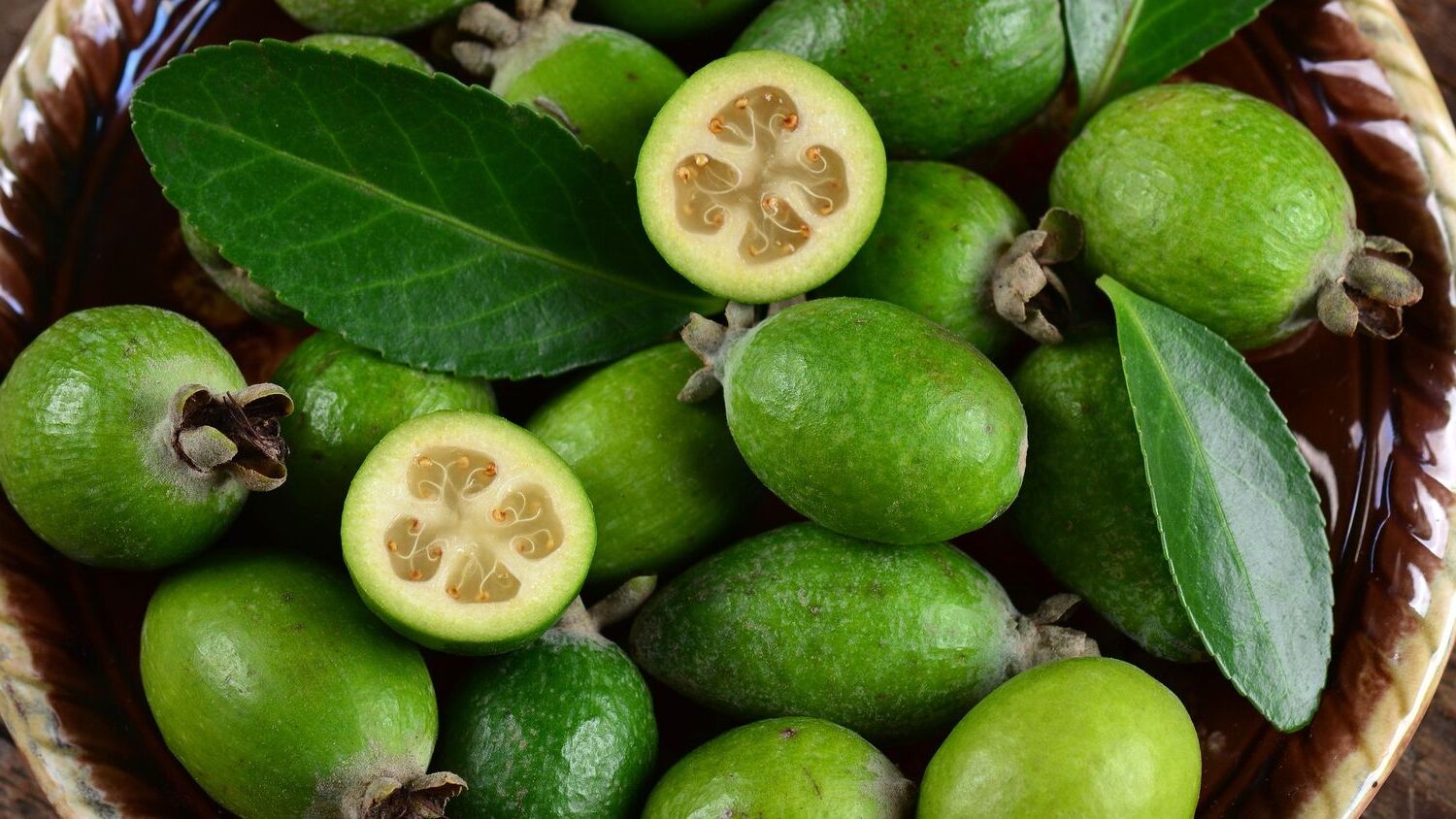
Feijoa, also known as pineapple guava, is a unique fruit that often flies under the radar. Originating from the highlands of South America, this green gem packs a punch with its sweet, tangy flavor. But what makes feijoa so special? Feijoa is not just delicious; it's also a powerhouse of nutrients. Rich in vitamins C and B, antioxidants, and dietary fiber, this fruit can boost your health in numerous ways. Whether you enjoy it fresh, in smoothies, or as a jam, feijoa offers a versatile addition to your diet. Ready to learn more? Let's dive into 20 fascinating facts about this incredible fruit!
Key Takeaways:
- Feijoa, also known as pineapple guava, is a nutritious fruit rich in vitamin C and antioxidants, making it great for boosting the immune system and promoting healthy skin.
- With its unique flavor and versatility, feijoa can be enjoyed in various ways, from eating it raw to using it in jams, jellies, and even skincare products.
What is Feijoa?
Feijoa, also known as pineapple guava or guavasteen, is a small, green fruit with a unique flavor. Native to South America, it's gaining popularity worldwide. Here are some fascinating facts about this exotic fruit.
-
Feijoa is native to the highlands of southern Brazil, parts of Colombia, Uruguay, Paraguay, and northern Argentina.
-
The fruit is named after João da Silva Feijó, a Brazilian botanist who discovered it in the 19th century.
-
Feijoa belongs to the Myrtaceae family, which also includes guava, eucalyptus, and clove.
Nutritional Benefits of Feijoa
Feijoa is not only delicious but also packed with nutrients. Let's explore some of its health benefits.
-
Feijoa is rich in vitamin C, which helps boost the immune system and promotes healthy skin.
-
The fruit contains dietary fiber, aiding digestion and helping maintain a healthy weight.
-
Feijoa is a good source of antioxidants, which protect the body from free radicals and reduce inflammation.
Growing Feijoa
Feijoa plants are relatively easy to grow, making them a favorite among gardeners. Here are some interesting facts about cultivating feijoa.
-
Feijoa trees can grow up to 15 feet tall, but they can be pruned to maintain a smaller size.
-
The plant is drought-tolerant, making it suitable for regions with limited water supply.
-
Feijoa trees prefer well-drained soil and full sun but can tolerate partial shade.
Culinary Uses of Feijoa
Feijoa's unique flavor makes it a versatile ingredient in various dishes. Discover some popular ways to enjoy this fruit.
-
Feijoa can be eaten raw, scooped out with a spoon, or sliced and added to salads.
-
The fruit is often used in jams, jellies, and chutneys due to its sweet and tangy taste.
-
Feijoa can be incorporated into baked goods like muffins, cakes, and bread for a tropical twist.
Feijoa in Different Cultures
Feijoa has made its way into various cultures, each with its unique way of enjoying the fruit. Let's take a look at some cultural connections.
-
In New Zealand, feijoa is a popular fruit, and many households have feijoa trees in their gardens.
-
In Russia, feijoa is often used to make a sweet, thick paste called "feijoa jam."
-
In Brazil, the fruit is sometimes fermented to produce a type of alcoholic beverage.
Fun Facts About Feijoa
Feijoa has some quirky and lesser-known facts that make it even more intriguing. Here are a few fun tidbits.
-
The fruit has a distinct aroma, often described as a mix of pineapple, guava, and mint.
-
Feijoa flowers are edible and can be used to decorate salads or desserts.
-
The fruit's skin is edible but can be slightly bitter, so some people prefer to peel it.
-
Feijoa is sometimes called "the fruit of the gods" due to its unique flavor and health benefits.
-
The fruit is often used in natural skincare products for its moisturizing and antioxidant properties.
Feijoa Fun Facts
Feijoas, also known as pineapple guavas, pack a punch with their unique flavor and impressive health benefits. These small green fruits are rich in vitamin C, fiber, and antioxidants, making them a nutritious addition to any diet. Originating from South America, feijoas thrive in subtropical climates and are now grown in various parts of the world, including New Zealand and California.
Their versatility shines in both sweet and savory dishes, from smoothies and jams to salads and salsas. Feijoas also have a long shelf life, allowing you to enjoy their goodness for weeks. Whether you're a seasoned feijoa fan or new to this exotic fruit, there's no denying its appeal. So next time you spot feijoas at your local market, grab a few and savor their delightful taste and health benefits.
Frequently Asked Questions
Was this page helpful?
Our commitment to delivering trustworthy and engaging content is at the heart of what we do. Each fact on our site is contributed by real users like you, bringing a wealth of diverse insights and information. To ensure the highest standards of accuracy and reliability, our dedicated editors meticulously review each submission. This process guarantees that the facts we share are not only fascinating but also credible. Trust in our commitment to quality and authenticity as you explore and learn with us.


